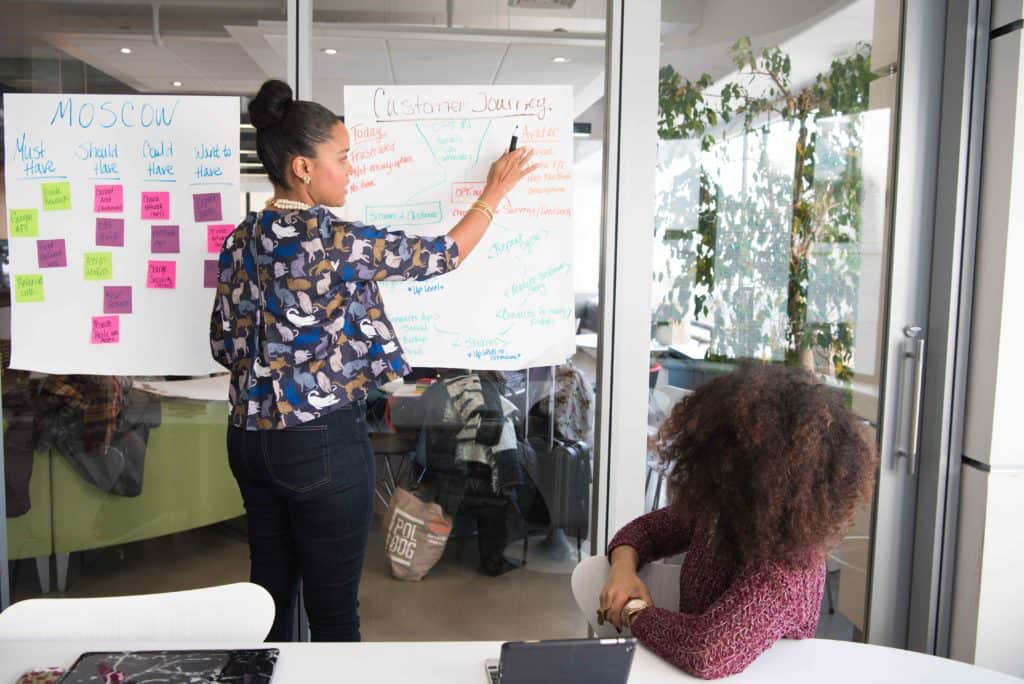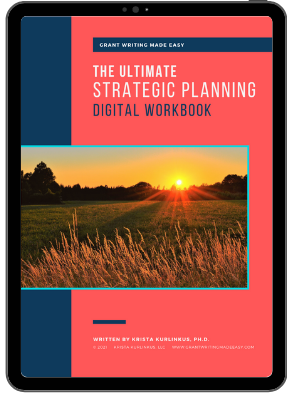By Alisha Verly-Jensen and Krista Kurlinkus
It’s becoming more common for grantmakers to ask applicants to provide a strategic plan alongside their grant proposal. The thing is, a strategic plan is not the type of document you can whip up within a typical 4-6 week grant deadline. Moreover, strategic plans should serve as the backbone of a nonprofit’s funding strategy and are an essential part of being grant-ready.
Grantmakers ask for strategic plans because they provide insight into the most stable aspects of an organization, i.e. its mission and vision, as well as its response to dynamic circumstances.
For example, COVID-19 has forced many nonprofit organizations to reconsider how they deliver their services. In some cases, organizations may have had to pivot to meet a completely different need that arose within their target population.
During a crisis, a strategic plan acts as a beacon to ensure that decision-making remains aligned with the organization’s overall mission. Strategic plans also provide direction for growth and agreed-upon objectives that the organization can strive towards together.
If your organization doesn’t have a strategic plan, or your current strategic plan is outdated, I would advise setting aside several hours over the next few weeks to put a document together.

The first step is identifying who should be part of the process.
This can look different for every organization, but I recommend soliciting input from any staff members with signatory authority, such as the executive or finance directors. Board members, program staff, and key partner organizations can also be involved in the planning. A grant writing professional can also help you frame your plan in a way that is measurable. More on this later.
Once this group of stakeholders has been identified, you should set preliminary goals for the strategic plan. Do you want to create a plan for the next three to five years, or stick to an annual timeframe? This will largely depend on your organization’s size, resources, and other underlying factors. Even with a wider timeframe, strategic plans are dynamic documents and should be reviewed and revised at least once a year.
Before any goals can be set, you and your team must also determine which areas your organization needs to improve.
This can be performed through a SWOT (strengths, weaknesses, opportunities, and threats) or SOAR (strengths, opportunities, aspirations, and results) analysis. I go through both of these assessments in-depth in The Ultimate Strategic Planning Workbook.
Combining the results of your analysis with feedback from staff, beneficiaries, and other stakeholders will give you a better understanding of your organization’s status and where you should focus your efforts over the next few months or years.
The most effective type of strategic planning begins with the goal and works backward. For example, if a SWOT analysis of an animal rescue organization reveals that the shelter is at capacity more than 95% of the year, the staff may set a goal to reduce that to 70% within 24 months. Staff can consider strategies to reach this goal, such as partnering with animal organizations with below-average capacity rates, boosting advertising for the shelter’s adoption and fostering programs, or offering low-cost spay and neutering clinics for pet owners.

Use Your Plan to Guide your Grant Strategy
Then based on these goals, staff can determine the type of resources and funding they will need to be successful. Since grant writers have experience writing objectives and metrics for proposals, they can ensure that the goals and methods described in the strategic plan are SMART (specific, measurable, achievable, relevant, and time-bound).
Getting a strategic plan together takes time, so if you want to plan for the 2022 fiscal year, I suggest starting the process very soon.
If you would like to learn more about strategic planning, my newly revised Ultimate Strategic Planning Digital Workbook will guide you through the process from start to finish. It’s a detailed, but extremely actionable and results-oriented 63-page workbook that you can download, type directly on, and save.







